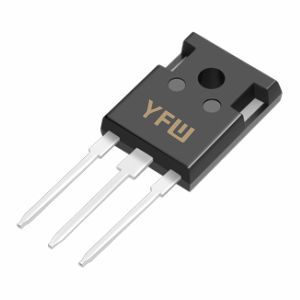Diodes are semiconductor devices that conduct current in one direction (forward bias) while blocking it in the opposite direction (reverse bias). This unidirectional behavior forms the basis of amplitude limiting. When a diode is forward-biased (anode voltage > cathode voltage), it allows current flow once the applied voltage exceeds its
forward voltage drop (Vf), typically 0.7V for silicon diodes . In reverse bias, the diode remains non-conductive until the voltage reaches its
reverse breakdown voltage (Vbr), at which point it abruptly conducts .
For amplitude limiting, diodes are strategically placed to “clip” or clamp signal peaks. In a series clipping circuit, the diode is inserted in series with the load. When the input voltage exceeds Vf, the diode conducts, diverting excess voltage and limiting the output amplitude. Conversely, in a shunt clipping circuit, the diode is connected in parallel with the load. Here, the diode conducts when the input voltage exceeds Vf, shorting the excess voltage to ground .
YFW’s diode portfolio, including fast recovery diodes (FRDs), Schottky diodes, and transient voltage suppressors (TVS), offers unmatched performance for amplitude limiting:
Ultra-fast Response: YFW’s FRDs, such as the US1MW (75ns reverse recovery time) , ensure minimal distortion in high-frequency applications. Their rapid switching capabilities make them ideal for clamping voltage spikes in power supplies and motor drives.
Low Forward Voltage Drop: Schottky diodes like the SR560 (0.7V Vf at 5A) minimize power loss during forward conduction, enhancing energy efficiency in voltage clamping circuits.
High Voltage Handling: Models like the R4000 (2.8kV reverse voltage) and FR207 (1kV VR) provide robust protection against extreme transient voltages, making them suitable for industrial and automotive environments.
Compact Packaging: YFW’s diodes, available in SOD-123FL and DO-27 packages , enable space-efficient PCB designs without compromising performance.
YFW diodes are widely used in:
Communication Systems: Protecting RF receivers from overvoltage caused by nearby transmitters.
Power Electronics: Clamping voltage spikes in inverters and DC-DC converters.
Automotive Electronics: Safeguarding ECUs (Electronic Control Units) from inductive load transients.
Medical Devices: Ensuring signal integrity in sensitive diagnostic equipment.
For example, in a bidirectional clipping circuit, two YFW diodes (e.g., US2G ) are reverse-paralleled to limit both positive and negative voltage extremes. This configuration is common in audio amplifiers to prevent speaker damage from signal overload .
YFW’s diodes are engineered with precision doping profiles and advanced packaging technologies to deliver consistent Vf and Vbr values across operating temperatures (-55°C to 150°C) . Rigorous quality control ensures low leakage current (e.g., 10µA at 1kV for FR207 ) and high surge tolerance, critical for mission-critical applications.
By leveraging YFW’s diodes, designers can achieve reliable amplitude limiting with minimal component count, reducing both cost and board space. Whether in consumer electronics or industrial machinery, YFW’s solutions empower engineers to build robust, efficient circuits.
Diodes are indispensable for amplitude limiting due to their inherent nonlinear I-V characteristics. YFW’s comprehensive range of diodes, optimized for speed, voltage handling, and reliability, provides unmatched performance in signal clipping and clamping applications. By choosing YFW, engineers gain access to cutting-edge semiconductor technology that ensures circuit protection and signal integrity in even the most demanding environments.
